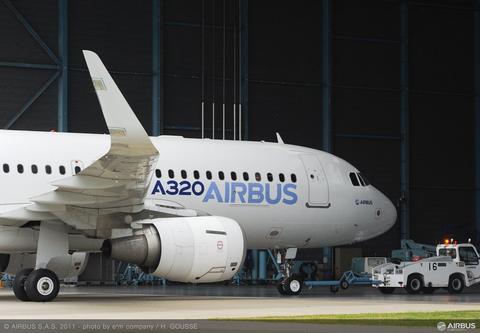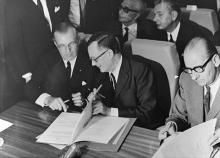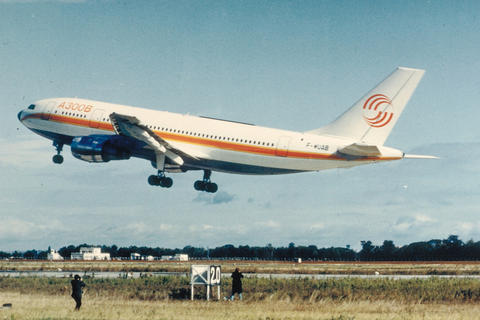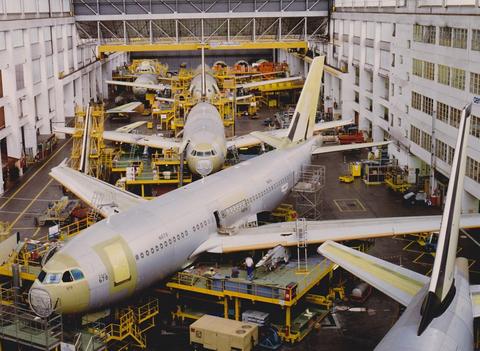Roger Béteille and Henri Ziegler knew that if Airbus was to succeed it would have to crack the lucrative U.S. market. They decided on a courageous move – to take the A300 on a six-week odyssey across South and North America which would show the U.S. airlines what they would miss if they failed to buy.
It was to prove perhaps the most unusual sales expedition ever undertaken by an aircraft manufacturer. On board were the crews, sales team, engineers and spares needed for the trip. The A300 was also loaded with crates of the best champagne for the thousands of guests invited to view the aircraft at stopovers.
The A300 took off from Toulouse in September, 1973, for Dakar in West Africa and then flew across the Atlantic to Sao Paulo, Brazil. It went on to Florida, where it touched down on North American soil for the first time, and then to Mexico City and Chicago. Felix Kracht recalled: “The whole world thought we were mad because we arranged it without any support from abroad. But the trip went without a hitch and left a very good impression. It helped us a great deal.” In fact there was one small incident – a birdstrike caused minor damage to one of the engines, which had to be replaced in Chicago. But even then, the speed and ease of the replacement operation served to impress watching U.S. airlines that Airbus product support was up to the mark.
Another benefit to emerge from this imaginative adventure was that the A300 had made a strong impression on Frank Borman, the former Apollo astronaut who then headed Eastern Airlines, one of America’s “big four.” Within three years Borman’s support for Airbus would prove crucial to the consortium’s survival and help establish the basis for future success.
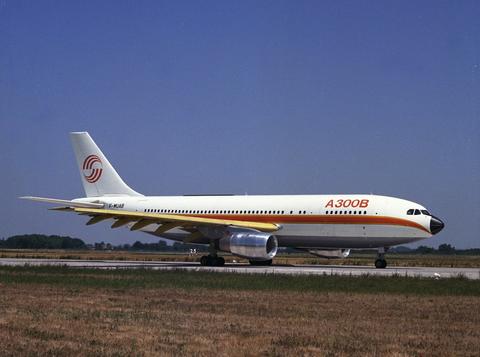
Airbus' A300 sales expedition across North and South America lasted a total of six weeks.
Expanding horizons with the A300B4
While the flight and ground tests of the A300B2 continued, Airbus began talking to Korean Airlines about producing a longer-range version, the B4. Airbus saw South-East Asia as a vital market ready to be opened up and Korean Airlines were the key. A year later, in September, 1974, Korean Airlines duly signed a contract to buy four A300B4s, with two options, becoming Airbus’ first non-European customer – a statement of faith which showed Airbus could win orders outside its home territory. (Following the first Air France order, Lufthansa had ordered three A300s with four options.)
French and German type certification for the A300 was obtained in March, 1974. And on 23 May, the first A300 to go into service made its initial commercial flight from Paris to London for Air France. Its economy, efficiency and technological standards in comparison to its rivals, the American tri-jets, were impressive. As Adam Brown, the former Vice President-Customer Affairs Directorate, put it: “An element of Airbus policy right from the start has been not to incorporate new technologies for their own sake but to carefully select meaningful applications which produce clear pay-offs in safety, operational capability and profitability benefits.
This approach enabled the A300, when it entered service, to offer airlines a 20% saving in direct operating costs per trip relative to the competing tri-jets.” Another factor, beyond the control of Airbus, contributed to the growing recognition among airlines that the A300 offered valuable economic advantages over its rivals. Not only did having one less engine considerably reduce the capital cost involved in buying the aircraft, but the A300’s fuel efficiency became increasingly important as the 1973 oil crisis began to bite and prices soared.
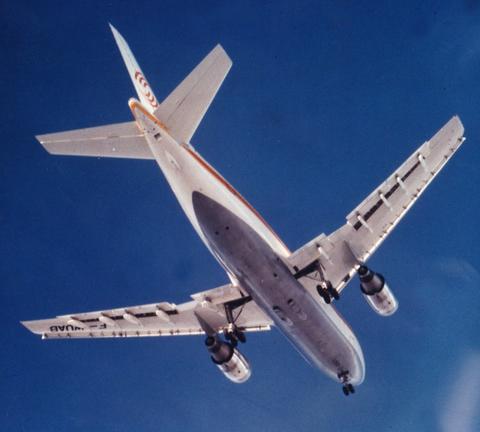
The A300B prototype is put through its paces during flight tests from Airbus’ home base in the Toulouse, France area.
An aggressive approach to the market
Nevertheless, sales were slow. In 1975, the extrovert and gregarious Bernard Lathière took over from Henri Ziegler at the helm of Airbus and instigated an aggressive sales approach which would see a number of crucial deals clinched. One of these was with Indian Airlines, a deal negotiated by Ziegler just before handing the reins to his successor. In the face of fierce competition, Lathière paid a rapid visit to Delhi and famously played on his Indian heritage – he had been born in the country and was able to produce a picture of himself as a boy with Gandhi – to persuade the airline’s president to stick with Airbus and confirm its order for three A300s, with three options.
Other orders followed from South African Airways (four plus four options) and Air Inter (three). But then, despite the best efforts of Lathière and his team, sales dried up. For 18 months from December 1975 Airbus entered into what became known as its “black period” when virtually no deals were struck and the number of “whitetails” – aircraft built but not sold – began growing in Toulouse. Production dropped to just half an aircraft a month during this period. Béteille, Lathière and Kracht resisted calls from some quarters to shut down production altogether, knowing that if they did this it would be the end of Airbus. Instead they redoubled their efforts to sell the A300, concentrating heavily on markets in the Far East – Japan, Korea, China – while continuing their assault on U.S. airlines.
The so-called “Silk Road” strategy paid off. A deal with Thai Airways for two A300s with two options finally broke the sales deadlock in May, 1977 – Lathière having travelled to Bangkok to complete the deal despite an attempted coup in the country.
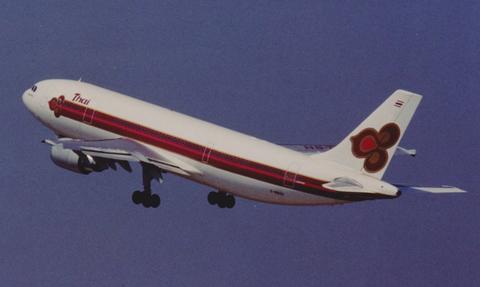
Airbus' A300 sales expedition across North and South America lasted a total of six weeks.

